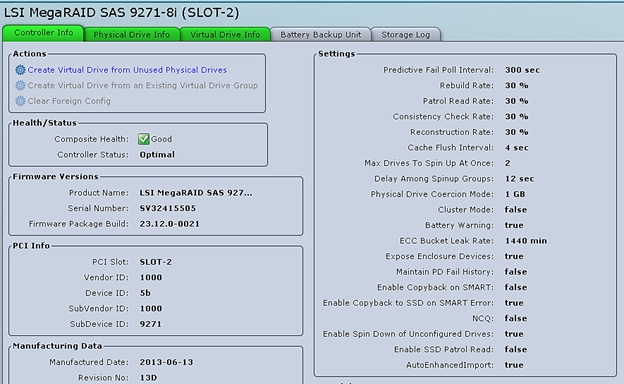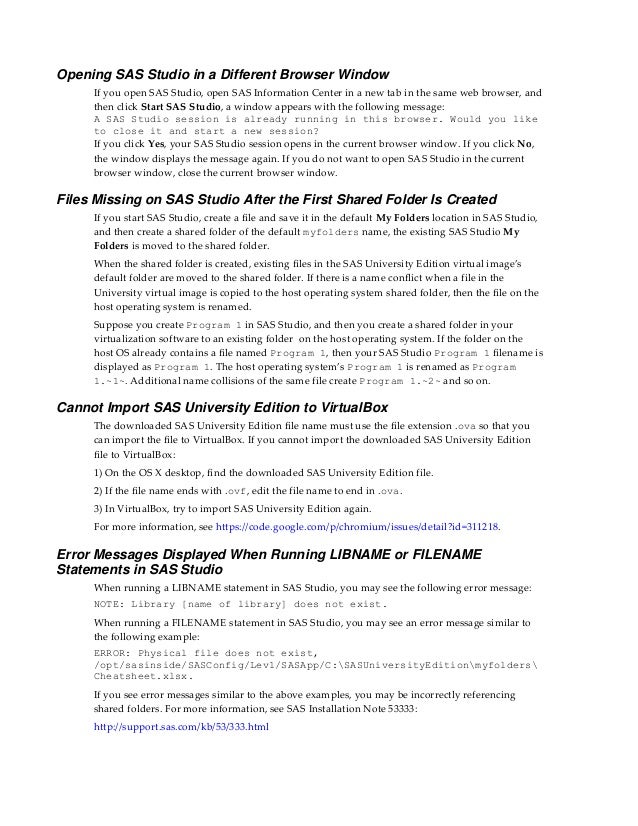

- #PHYSICAL FILE DOES NOT EXIST SAS UNIVERSITY EDITION HOW TO#
- #PHYSICAL FILE DOES NOT EXIST SAS UNIVERSITY EDITION SOFTWARE#
- #PHYSICAL FILE DOES NOT EXIST SAS UNIVERSITY EDITION WINDOWS#
It seemed that the university computer would quietly log me off after a while (apparently just a short time, for some reason - around 15 minutes), without any kind of pop-up warning.

xls complete the process of importing the file and then save it.Īt about this point, I made my first discovery. xls close Excel to prevent conflicts in SAS, go to File > Import Data and navigate to the. The gist of it was as follows: if possible, eliminate empty rows and columns from the spreadsheet save it as an. Fortunately, by then I had spent hours screwing around and had figured out part of the answer for myself (with a little help from my friends).
#PHYSICAL FILE DOES NOT EXIST SAS UNIVERSITY EDITION HOW TO#
Later, I found what looked like a very helpful explanation of how to import an Excel file into SAS (and also another).

He didn’t put it in so many words, but I was able to infer as much from the half-hour I spent trying to figure out what he had said. The nice SAS man explained that I needed to start with the SAS File > Import Data process. The secondary reason for wanting to get off the phone was that I had just encountered a plate of food that seemed much more interesting than whatever was happening onscreen.

There were just too many things that I didn’t understand. The primary reason was that I felt like I was bothering him. He was patiently explaining things about libraries and commands and after about 30 seconds all I wanted was to get off the phone. My first step was informed by a completely intimidating call to a very nice man at SAS tech support.
#PHYSICAL FILE DOES NOT EXIST SAS UNIVERSITY EDITION WINDOWS#
In this case, I learned that SAS for Windows 9.2 would allow me to import that Excel file in a place and form that I could actually use, once I mastered a bit of the SAS lingo. The problem was that I just needed straightforward instructions on getting that Excel data into SAS and working with it, and they were all assuming that I understood half of what they were saying before I started, and really only needed the other half that they happened to be providing.įortunately, even a completely clueless individual is apt to learn something, if only by accident, if s/he stays around long enough. They were all well-written and completely useless. These included the built-in SAS help system, many webpages, and SAS guides by Evans, someone at Cornell, and others. I flailed around for several hours, looking at random sources of potential guidance. I didn’t keep detailed notes in the early phases, so some of my comments here are a bit jumbled. I decided to stick with the older format, just in case. SAS did seem willing to try to import an. That advice was more than a year old at this point, and may not have been accurate anymore. The situation would probably have been simpler if I had been attempting the import on campus, but I wasn’t.Īs initial preparation, someone advised that it might be best to save that data in Excel 97-2003 format, because SAS was not yet up to the challenge of importing from Excel 2010.
#PHYSICAL FILE DOES NOT EXIST SAS UNIVERSITY EDITION SOFTWARE#
To use SAS, I was connecting with a university computer via some uncertain combination of software referred to as Citrix, vDesk, and VLab. That is, I was working on my home computer, where I did not have SAS. INPUT ID $ 1-3 GP $ 5 AGE 6-9 TIME1 10-14 TIME2 15-19 TIME3 20-24 Įxpected result is to load the file EXAMPLE.I was using SAS 9.2 in a remote environment. INFILE 'W:\projects\RWDS\rwds_1619\SASDATA\EXAMPLE.TXT' var/opt/teradata/sas/config/Lev1/SasApp/W:\projects\RWDS\rwds_1619\SASDATA\EXAMPLE.TXT When I try to input the files in SAS EG using INFILE command, I get this error: W:\projects\RWDS\rwds_1619\SASDATA\EXAMPLE.TXT The path on files on the server, which I can see on SAS EG, is: The content of the file is displayed properly in the SAS Process Flow. I can open EXAMPLE.TXT in SAS EG when I go The path of EXAMPLE.TXT on the Windows Shared folder: The file EXAMPLE.txt is saved on a windows shared drive, which is connected to a folder on the server running SAS EG. I want to input files in SAS EG for an analysis using INFILE. SAS EG is running on a UNIX server, and I am using a Windows machine.


 0 kommentar(er)
0 kommentar(er)
